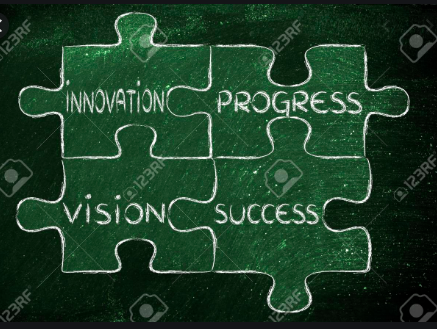Do you sometimes wonder why there is less business innovation design than you might have expected? We often hear from our clients that things are working; therefore they are many paths to innovation.
In any successful organization, many things are working or it wouldn’t be a going concern. So it’s not surprising that people want to sustain that success. Yet, that simple impulse to keep what’s working can produce decisions that can slow or halt creativity and innovation. A new idea that doesn’t quite fit with prior assumptions often is quickly set aside. Mistakes are seen as problems that must be fixed in order to restore the organization’s smooth functioning.
It’s all very logical and well-intended but the effect is to resist any substantial change, gradually eroding the capacity for creative ideas and innovation and even actively opposing them.
Innovative companies understand this and take action to overcome these tendencies. They continually track their customers and competitors to quickly detect signals that may point to needed changes. Thoughtful experimentation is encouraged, not only as a way to test new ideas but to maintain the organization’s proficiency at implementing new ideas. There’s an awareness of the need to promote continual adaptation, rather than simply protect what’s working.
The truth is that there are many paths to innovation. Here are eight of them.
Employ crowdsourcing to expand the number of ideas
When Microsoft launched Kinect for the Xbox in 2010, it quickly became the hottest consumer device ever, selling 8 million units in just the first two months. Almost immediately, hackers began altering its capabilities to do things that Microsoft never intended. Yet instead of asking them to stop, it embraced the hackers, quickly releasing a software development kit to help them along.
Like Microsoft, many firms today are embracing open innovation to expand capabilities. Cisco outfoxed Lucent not by developing the technology itself, but by smartly acquiring startups. Procter & Gamble has found great success with its Connect and Develop program and platforms like Innocentive allow firms to expose thorny problems to a more diverse skill set.
As was the case with Alexander Fleming and penicillin, most firms will find that solving their most important problems will require skills and expertise they don’t have. That means that, at some point, they will need to utilize partners and platforms to go beyond their own internal capabilities of technology and talent.
Connect the unconnected
The reason that Fleming was unable to bring Penicillin to market was that, as a biologist, he lacked many of the requisite skills. It wasn’t until a decade later that two chemists, Howard Florey, and Ernst Boris Chain, picked up the problem and were able to synthesize penicillin. Even then, it took people with additional expertise in fermentation and manufacturing to turn it into the miracle cure we know today.
This isn’t the exception, but the norm. Darwin’s theory of natural selection borrowed ideas from Thomas Malthus, an economist, and Charles Lyell, a geologist. Watson and Crick’s discovery of DNA was not achieved by simply plowing away at the lab, but by incorporating discoveries in biology, chemistry, and x-ray diffraction to inform their model building.
Great innovation almost never occurs within one field of expertise but is almost invariably the product of synthesis across domains.
Collaboration is key
Alexander Fleming discovered penicillin in 1928, but it wasn’t until 15 years later, in 1943, that the miracle drug came into widespread use. Alan Turing came up with the idea of a universal computer in 1936, but it wasn’t until 1946 that one was actually built, and not until the 1990s that computers began to impact productivity statistics.
We tend to think of innovation as arising from a single brilliant flash of insight, but the truth is that it is a drawn-out process involving the discovery of an insight, the engineering of a solution, and then the transformation of an industry or field. That’s almost never achieved by one person or even within one organization.
Question everything
Too often, we treat innovation as a monolith, as if every problem was the same, but that’s clearly not the case. In laboratories and factory floors, universities and coffee shops, or even over a beer after work, people are sussing out better ways to do things. There is no monopoly on creative thought.
But that leads us to a problem: How should we go about innovation? Should we hand it over to the guys with white lab coats? An external partner? A specialist in the field? Crowdsource it? What we need is a clear framework for making decisions.
As I wrote in Harvard Business Review, the best way to start is by asking the right questions: (1) How well is the problem defined? and (2) How well is the domain defined? Once you’ve asked those framing questions, you can start defining a sensible way to approach the problem using the innovation matrix.
Clearly, no one method can suffice. Look at any great innovator, whether it is Apple, Tesla, or Google, and you’ll find a portfolio of strategies. So the first step toward solving a difficult problem is asking the questions you need to define your approach. To paraphrase Voltaire, if you need to solve a problem, first define your terms.
Think of new business models
When Chester Carlson perfected his invention in 1938, he tried to market it to more than 20 companies but had no takers. It was simply far too expensive for the market. Finally, in 1946, Joe Wilson, President of the Haloid Company, came up with the idea of leasing the machines instead of selling them outright. The idea was a rousing success and in 1948 the firm changed its name to Xerox.
The tricky thing about disruptive innovations is that they rarely fit into existing business models and so the value they create isn’t immediately clear. Kodak made money by selling film, so was slow to adopt the digital cameras that the company had itself invented. Yahoo’s business was focused on keeping users on its site, so passed on the chance to acquire Google.
It’s not just products that we have to innovate, but business models as well
Size is not important
When most people think about innovation, they think about startups. And certainly, new firms like Uber, Airbnb, and Space X can transform markets. But others such as IBM, Procter and Gamble, and 3M have managed to stay on top for decades, even as competitors rise up to challenge them and then, when markets shift, disappear just as quickly into oblivion.
While it’s true that small, agile firms can move fast, larger enterprises have the luxury of going slow. They have loyal customers and an abundance of resources. They can see past the next hot trend and invest for the long term. There’s a big difference between hitting on the next big thing and developing it consistently, generation after generation.
Start at the heart
Many people think of innovation as discarding the old to make room for the new, but as Bain & Co.’s Chris Zook points out in Profit From The Core, smart companies realize that the bulk of their profits will come from current lines of business.
Take Google for example. Yes, it pursues radical innovation, like self-driving cars, at its Google X unit, but the continual improvement of its core search business is what made it the world’s most valuable company. That’s why Google, as well as many other innovative companies, follow the 70/20/10 rule.
The premise of the rule is simple. Focus 70% of your resources on improving existing technology (i.e. search), 20% on adjacent markets (i.e. Gmail, Google Drive, etc.), and 10% on completely new markets (i.e. self-driving cars).
.












